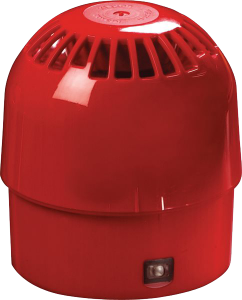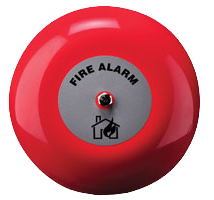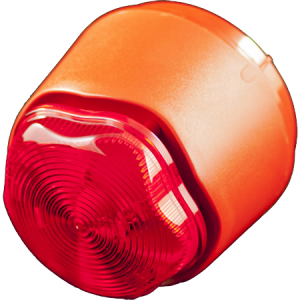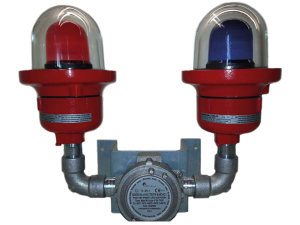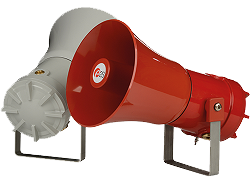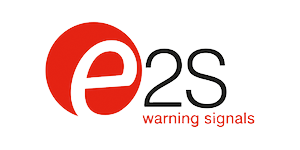 Alerting Devices are active fire protection components of a fire alarm system. An Alerting Device may use audible or visible stimuli to alert the occupants of a fire or other emergency condition requiring action. The two most commonly recognized alerting method, regardless of their communication method, Addressable or conventional, are Audible (Sounder, Load Speaker, Sirens and Bells) and Visible (Flashers, Beacons and Strobes).
Alerting Devices are active fire protection components of a fire alarm system. An Alerting Device may use audible or visible stimuli to alert the occupants of a fire or other emergency condition requiring action. The two most commonly recognized alerting method, regardless of their communication method, Addressable or conventional, are Audible (Sounder, Load Speaker, Sirens and Bells) and Visible (Flashers, Beacons and Strobes).
Audible Alerting Devices (Sounder, Load Speaker, Sirens and Bells) |
|
|
Audible Alerting Devices which include fire alarm sounders, voice enhanced sounders and Voice Alarm Device (VAD) systems are the instruments used to generate a general alarm sound or an audible warning alarm to indicate a possible fire or emergency incident. Audible Alerting Devices can be either motorized bells or wall mountable sounders or horns. They can also be speaker strobes which sound an alarm, followed by a voice evacuation message which warns people inside the building not to use the elevators. Audible Alerting Devices have been in use longer than any other method of notification. Initially, all appliances were either electromechanical horns or electric bells, which would later be replaced by electronic sounders. Most of today’s appliances produce sound pressure levels between 45 and 120 decibels at one meter. |
Visible Alerting Devices (Flashers, Beacons and Strobes) |
|
|
The main criterion for installation of Visible Alarm Devices (VAD) is their ability to give a warning of fire in situations in which audible fire alarm devices cannot reliably do so, or are inappropriate. These being:
|
Special Applications
Remote Indicator (Remote LED) |
|
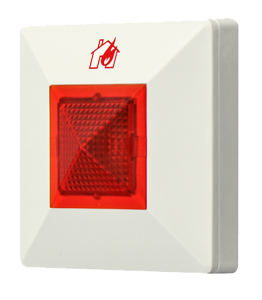 |
Remote Indicator units are designed for fire detection systems requiring local indication of an individual or group of detection devices located in inaccessible, out of sight (for instance behind a locked door) or concealed areas. They allow the quick and easy identification of fire alarm detectors that have been activated in floor and ceiling voids spaces, roof voids, lift shafts and escalator machine rooms. |
Intrinsically Safe Alerting Devices |
|
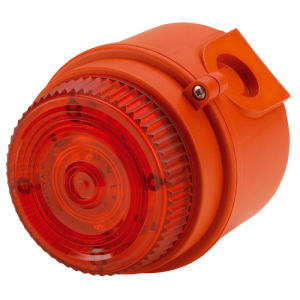 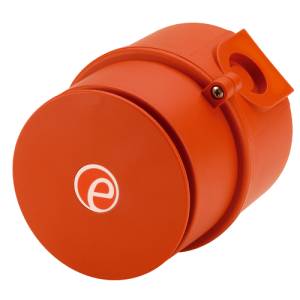 |
It is used in hazardous locations where explosive levels of gas or vapors are normally or potentially present. Intrinsically safe Alerting devices must be compatible with the system control panel for proper use. An intrinsically safe barrier must be installed at the point where the intrinsically safe circuit connects to the fire alarm control panel. The barrier limits the available voltage and current available on the circuit to safe levels. 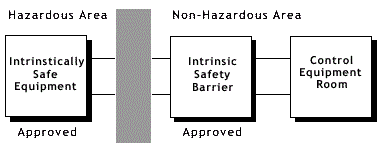 |
Explosion Proof Alerting Devices |
|
|
Electrical equipment sometimes must be installed in areas where combustible vapors and gases are used or may be present. These are commonly referred to as hazardous locations. When equipment must be installed in hazardous locations, there are strict requirements for the construction of the installation, including materials and design requirements. An Explosion Proof classification for an Alerting device means that the housing has been engineered and constructed to contain a flash or explosion. Such housings are usually made of cast aluminum or stainless steel and are of sufficient mass and strength to safely contain an explosion should flammable gases or vapors penetrate the housing and the internal electronics or wiring cause an ignition.  |
Applicable Notes
- To positioning the Alerting Devices, related standards such as NFPA 72 or EN54-3 and EN54-23 shall be considered.
- According to NFPA 72, 2002 Edition: “7.4.2.1* To ensure that audible public mode signals are clearly heard, unless otherwise permitted by 7.4.2.2 through 7.4.2.5, they shall have a sound level at least 15 dB (Decibel) above the average ambient sound level or 5 dB above the maximum sound level having a duration of at least 60 seconds, whichever is greater, measured 1.5 m above the floor in the occupiable area, using the A-weighted scale (dBA).”
- Audible ad visible alarms for Fire and Gas system shall be distinguishable from audible alarms used for other purposes. The signal shall be of different tone and lights for fire, combustible gas and toxic gas alarms.
- A manual operation should be required to silence the alarm. The alarm shall not be automatically silenced or canceled.
- The color of the transmitted Light, power output and operation shall be such that it is clearly visible from all areas it covers and readily discernible against artificial lighting internally and sunlight externally.
- The maximum coverage areas for strobes are listed in NFPA 72 Section 18.5 and are based on commonly listed candela ratings.
Our Services
SISICO is able to offer an extensive range of Alerting Devices to suit your specific environment from below mentioned companies:

